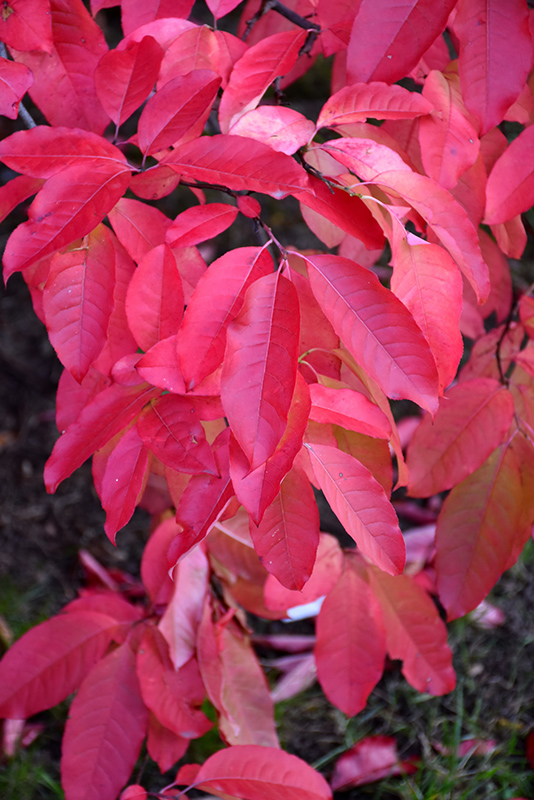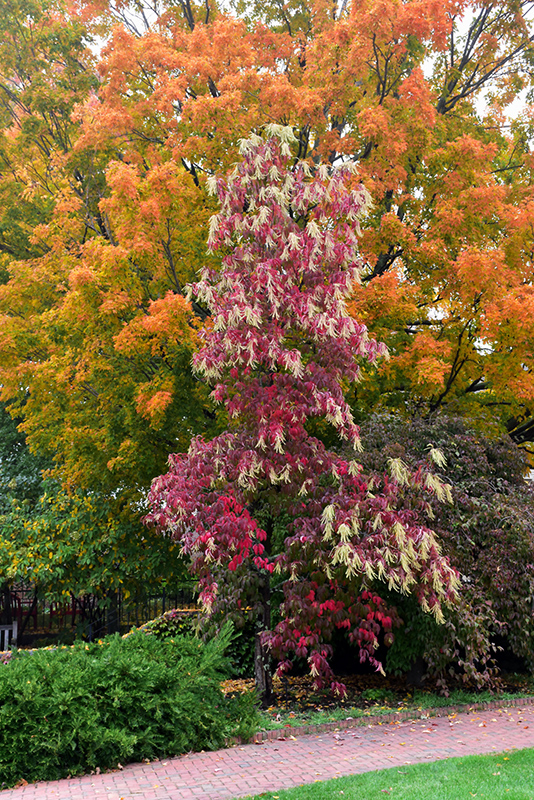Height: 30 feet
Spread: 20 feet
Sunlight:
![]()
![]()
Hardiness Zone: 5a
Description:
An uncommon yet very ornamental small accent tree with something for all seasons; drooping panicles of urn-shaped flowers in late spring followed by similar seeds, brilliant red fall color and a distinctive habit; needs very specific growing conditions
Ornamental Features
Sourwood features dainty chains of fragrant white bell-shaped flowers hanging below the branches in late spring. It has dark green deciduous foliage which emerges lime green in spring. The pointy leaves turn an outstanding red in the fall. It produces brown capsules from mid fall to late winter. The furrowed brown bark is extremely showy and adds significant winter interest.
Landscape Attributes
Sourwood is a deciduous tree with a stunning habit of growth which features almost oriental horizontally-tiered branches. Its average texture blends into the landscape, but can be balanced by one or two finer or coarser trees or shrubs for an effective composition.
This is a relatively low maintenance tree, and usually looks its best without pruning, although it will tolerate pruning. Deer don't particularly care for this plant and will usually leave it alone in favor of tastier treats. It has no significant negative characteristics.
Sourwood is recommended for the following landscape applications;
- Accent
Planting & Growing
Sourwood will grow to be about 30 feet tall at maturity, with a spread of 20 feet. It has a low canopy with a typical clearance of 3 feet from the ground, and should not be planted underneath power lines. It grows at a slow rate, and under ideal conditions can be expected to live for 70 years or more.
This tree does best in full sun to partial shade. It does best in average to evenly moist conditions, but will not tolerate standing water. It is very fussy about its soil conditions and must have rich, acidic soils to ensure success, and is subject to chlorosis (yellowing) of the foliage in alkaline soils. It is quite intolerant of urban pollution, therefore inner city or urban streetside plantings are best avoided, and will benefit from being planted in a relatively sheltered location. Consider applying a thick mulch around the root zone in winter to protect it in exposed locations or colder microclimates. This species is native to parts of North America, and parts of it are known to be toxic to humans and animals, so care should be exercised in planting it around children and pets.



